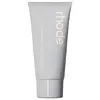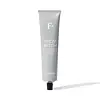What's inside
What's inside
 Key Ingredients
Key Ingredients

 Benefits
Benefits

 Concerns
Concerns

 Ingredients Side-by-side
Ingredients Side-by-side

Water
Skin ConditioningGlycerin
HumectantCaprylic/Capric Triglyceride
MaskingButyrospermum Parkii Butter
Skin ConditioningBehenyl Alcohol
EmollientXylitylglucoside
HumectantNiacinamide
SmoothingSqualane
EmollientSodium Acrylates Copolymer
Acetyl Tetrapeptide-2
Skin ConditioningPalmitoyl Heptapeptide-27
Skin ConditioningPalmitoyl Oligopeptide-78
Skin ConditioningPalmitoyl Octapeptide-24
Skin ConditioningPhenoxyethanol
PreservativeAnhydroxylitol
Humectant1,2-Hexanediol
Skin ConditioningHydroxyethyl Acrylate/Sodium Acryloyldimethyl Taurate Copolymer
Emulsion StabilisingXylitol
HumectantLecithin
EmollientEthylhexylglycerin
Skin ConditioningGlucose
HumectantBisabolol
MaskingSodium Hyaluronate
HumectantTeprenone
Skin ConditioningPolysorbate 60
EmulsifyingSorbitan Isostearate
EmulsifyingCaprylyl Glycol
EmollientEuterpe Oleracea Fruit Extract
Potassium Sorbate
PreservativeCitric Acid
BufferingSorbic Acid
PreservativeLactic Acid/Glycolic Acid Copolymer
Skin ConditioningTocopherol
AntioxidantPolyvinyl Alcohol
Sodium Hydroxide
BufferingWater, Glycerin, Caprylic/Capric Triglyceride, Butyrospermum Parkii Butter, Behenyl Alcohol, Xylitylglucoside, Niacinamide, Squalane, Sodium Acrylates Copolymer, Acetyl Tetrapeptide-2, Palmitoyl Heptapeptide-27, Palmitoyl Oligopeptide-78, Palmitoyl Octapeptide-24, Phenoxyethanol, Anhydroxylitol, 1,2-Hexanediol, Hydroxyethyl Acrylate/Sodium Acryloyldimethyl Taurate Copolymer, Xylitol, Lecithin, Ethylhexylglycerin, Glucose, Bisabolol, Sodium Hyaluronate, Teprenone, Polysorbate 60, Sorbitan Isostearate, Caprylyl Glycol, Euterpe Oleracea Fruit Extract, Potassium Sorbate, Citric Acid, Sorbic Acid, Lactic Acid/Glycolic Acid Copolymer, Tocopherol, Polyvinyl Alcohol, Sodium Hydroxide
Water
Skin ConditioningCoco-Caprylate/Caprate
EmollientCaprylic/Capric Triglyceride
MaskingHydrogenated Palm Oil
EmollientCetearyl Alcohol
EmollientGlycerin
HumectantCetyl Alcohol
EmollientStearyl Alcohol
EmollientSimmondsia Chinensis Seed Oil
EmollientHydrogenated Coco-Glycerides
EmollientCereus Grandiflorus Flower Extract
Skin ConditioningOpuntia Ficus-Indica Seed Oil
EmollientCocos Nucifera Oil
MaskingAscophyllum Nodosum Extract
Skin ConditioningHelianthus Annuus Extract
EmollientRosmarinus Officinalis Leaf Extract
AntimicrobialOryza Sativa Bran Extract
Skin ConditioningAscorbyl Palmitate
AntioxidantTocopherol
AntioxidantLecithin
EmollientXanthan Gum
EmulsifyingPolysorbate 60
EmulsifyingSodium Acrylates Copolymer
Caprylyl Glycol
EmollientPhenoxyethanol
PreservativeHexylene Glycol
EmulsifyingButylene Glycol
HumectantTetrasodium EDTA
Potassium Hydroxide
BufferingEthylhexylglycerin
Skin ConditioningParfum
MaskingWater, Coco-Caprylate/Caprate, Caprylic/Capric Triglyceride, Hydrogenated Palm Oil, Cetearyl Alcohol, Glycerin, Cetyl Alcohol, Stearyl Alcohol, Simmondsia Chinensis Seed Oil, Hydrogenated Coco-Glycerides, Cereus Grandiflorus Flower Extract, Opuntia Ficus-Indica Seed Oil, Cocos Nucifera Oil, Ascophyllum Nodosum Extract, Helianthus Annuus Extract, Rosmarinus Officinalis Leaf Extract, Oryza Sativa Bran Extract, Ascorbyl Palmitate, Tocopherol, Lecithin, Xanthan Gum, Polysorbate 60, Sodium Acrylates Copolymer, Caprylyl Glycol, Phenoxyethanol, Hexylene Glycol, Butylene Glycol, Tetrasodium EDTA, Potassium Hydroxide, Ethylhexylglycerin, Parfum
 Reviews
Reviews

Ingredients Explained
These ingredients are found in both products.
Ingredients higher up in an ingredient list are typically present in a larger amount.
This ingredient is an emollient, solvent, and texture enhancer. It is considered a skin-softener by helping the skin prevent moisture loss.
It helps thicken a product's formula and makes it easier to spread by dissolving clumping compounds.
Caprylic Triglyceride is made by combining glycerin with coconut oil, forming a clear liquid.
While there is an assumption Caprylic Triglyceride can clog pores due to it being derived from coconut oil, there is no research supporting this.
Learn more about Caprylic/Capric TriglycerideCaprylyl Glycol is a humectant and emollient, meaning it attracts and preserves moisture.
It is a common ingredient in many products, especially those designed to hydrate skin. The primary benefits are retaining moisture, skin softening, and promoting a healthy skin barrier.
Though Caprylyl Glycol is an alcohol derived from fatty acids, it is not the kind that can dry out skin.
This ingredient is also used as a preservative to extend the life of products. It has slight antimicrobial properties.
Learn more about Caprylyl GlycolEthylhexylglycerin (we can't pronounce this either) is commonly used as a preservative and skin softener. It is derived from glyceryl.
You might see Ethylhexylglycerin often paired with other preservatives such as phenoxyethanol. Ethylhexylglycerin has been found to increase the effectiveness of these other preservatives.
Glycerin is already naturally found in your skin. It helps moisturize and protect your skin.
A study from 2016 found glycerin to be more effective as a humectant than AHAs and hyaluronic acid.
As a humectant, it helps the skin stay hydrated by pulling moisture to your skin. The low molecular weight of glycerin allows it to pull moisture into the deeper layers of your skin.
Hydrated skin improves your skin barrier; Your skin barrier helps protect against irritants and bacteria.
Glycerin has also been found to have antimicrobial and antiviral properties. Due to these properties, glycerin is often used in wound and burn treatments.
In cosmetics, glycerin is usually derived from plants such as soybean or palm. However, it can also be sourced from animals, such as tallow or animal fat.
This ingredient is organic, colorless, odorless, and non-toxic.
Glycerin is the name for this ingredient in American English. British English uses Glycerol/Glycerine.
Learn more about GlycerinLecithin is a term for a group of substances found in the cell membranes of plants, animals, and humans. They are made up of mixture of phospholipids.
This ingredient has emollient and emulsifying properties.
As an emollient, lecithen helps soften the skin and creates a barrier to keep moisture in.
As an emulsifier, it also helps prevent water and oil ingredients from separating. Lecithin can also help ingredients be better absorbed by the skin.
This is because the phospholipids in lecithin produce liposomes. Liposomes help other ingredients get through the skin barrier.
Depending on the source of this ingredient, lecithin may not be fungal acne safe. This is because some sources of lecithin come from soybean oil, which may feed the malassezia yeast that feeds fungal acne.
We recommend reaching out to the brand you are purchasing from to inquire about the source of their lecithin.
Some other names for this ingredient include soy lecithin and deoiled soy lecithin.
Learn more about LecithinPhenoxyethanol is a preservative that has germicide, antimicrobial, and aromatic properties. Studies show that phenoxyethanol can prevent microbial growth. By itself, it has a scent that is similar to that of a rose.
It's often used in formulations along with Caprylyl Glycol to preserve the shelf life of products.
Polysorbate 60 is used to help stabilize products. It is a surfactant and emulsifier. These properties help keep ingredients together in a product. Surfactants help reduce surface tension between ingredients with different states, such as liquids and solids. Emulsifiers help prevent oils and waters from separating.
Polysorbate 60 is sorbitol-based and created from the ethoxylation of sorbitan. Ethoxylation is a chemical reaction used to add ethylene oxide. Sorbitan is a the dehydrated version of sorbitol, a sugar found in fruits.
In this case, the 60 comes from reacting 60 units of ethylene oxide with sorbitan.
Polysorbates are commonly used in medicine and foods.
Learn more about Polysorbate 60We don't have a description for Sodium Acrylates Copolymer yet.
Tocopherol (also known as Vitamin E) is a common antioxidant used to help protect the skin from free-radicals and strengthen the skin barrier. It's also fat soluble - this means our skin is great at absorbing it.
Vitamin E also helps keep your natural skin lipids healthy. Your lipid skin barrier naturally consists of lipids, ceramides, and fatty acids. Vitamin E offers extra protection for your skin’s lipid barrier, keeping your skin healthy and nourished.
Another benefit is a bit of UV protection. Vitamin E helps reduce the damage caused by UVB rays. (It should not replace your sunscreen). Combining it with Vitamin C can decrease sunburned cells and hyperpigmentation after UV exposure.
You might have noticed Vitamin E + C often paired together. This is because it is great at stabilizing Vitamin C. Using the two together helps increase the effectiveness of both ingredients.
There are often claims that Vitamin E can reduce/prevent scarring, but these claims haven't been confirmed by scientific research.
Learn more about TocopherolWater. It's the most common cosmetic ingredient of all. You'll usually see it at the top of ingredient lists, meaning that it makes up the largest part of the product.
So why is it so popular? Water most often acts as a solvent - this means that it helps dissolve other ingredients into the formulation.
You'll also recognize water as that liquid we all need to stay alive. If you see this, drink a glass of water. Stay hydrated!
Learn more about Water